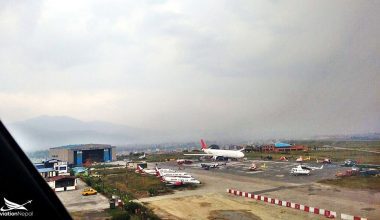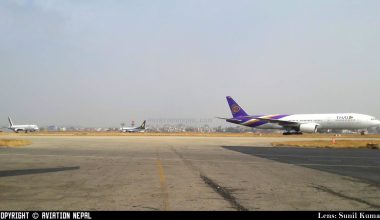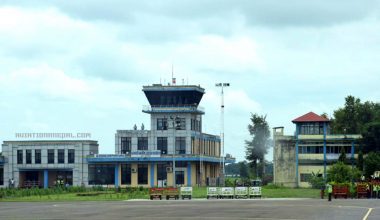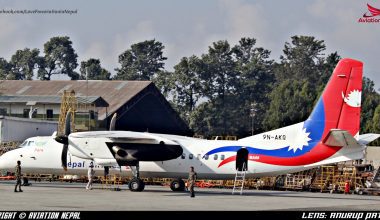The newly installed En-route Monopulse Secondary Surveillance Radar (E-MSSR) at Bhattedanda and Terminal-Monopulse Secondary Surveillance Radar (T-MSSR) at Tribhuvan International Airport (TIA) came into operation from 1st February 2018.
This radar has been constructed in joint venture with Japanese International Corporation Agency (JICA) and Civil Aviation Authority of Nepal (CAAN).
Mr.Sanjeev Singh Kathayat, Deputy Director of CAAN informed Aviation Nepal that the Radar was formally operated from 6:30 am Thursday morning.
The installed ‘En-route Radar’ at Bhattedanda and ‘Terminal Radar’ installed at the Tribhuvan International Airport (TIA) covers 75 per cent of total area of Nepal as well as makes Nepali aviation much more secure and systematic. The radar helps to provide information about the range, angle or velocity of aircraft through the radio waves.
According to Mr.Sanjeev Gautam, Director General of CAAN, the installment and operation of the new radar will enhance air navigation throughout the country.
The aircraft which came from the Federal Aviation Administration (FAA) of United States of America has investigated the flight calibration of these two radar on November 16 to 18.
The previous 2012 radar used in TIA was also supplied by Japan’s Toshiba Company in 1998, and it was installed under the grant assistance from the Japanese government.
The new Mode S Monopulse Secondary Surveillance Radar (MSSR) can monitor the aircraft up to 250 nautical miles. Its range reaches extending up to Dang in the west, and covers up the aerospace of entire eastern, northern and southern parts of the country whereas, the current existing 18 years old outdated radar’s range can only reach up to 60 nautical miles.
The general provisions states that the Radar Surveillance Service will be provided only for transponder equipped aircraft in radar covered airspace within Kathmandu Terminal Control Area (TMA) and control zone (CTR). Likewise, at outside controlled airspace, only radar monitoring service will be provided to transponder equipped aircraft. Such service does not relieve the pilot-in-command of an aircraft of any responsibilities including the final decision regarding any suggested alteration of flight plan.
Information derived from Radar surveillance systems, including safety-related alerts and warnings such as Short Term Conflict Alert (STCA) and Minimum Safe Altitude Warning (MSAW), should be used to the extent possible in the provision of air traffic control service in order to improve capacity and efficiency as well as to enhance safety.
The pilots and controllers are strictly required to adhere the published operating procedures and standard radiotelephony phraseology. The correct setting of transponder codes and/or aircraft identification will be ensured at all times.






